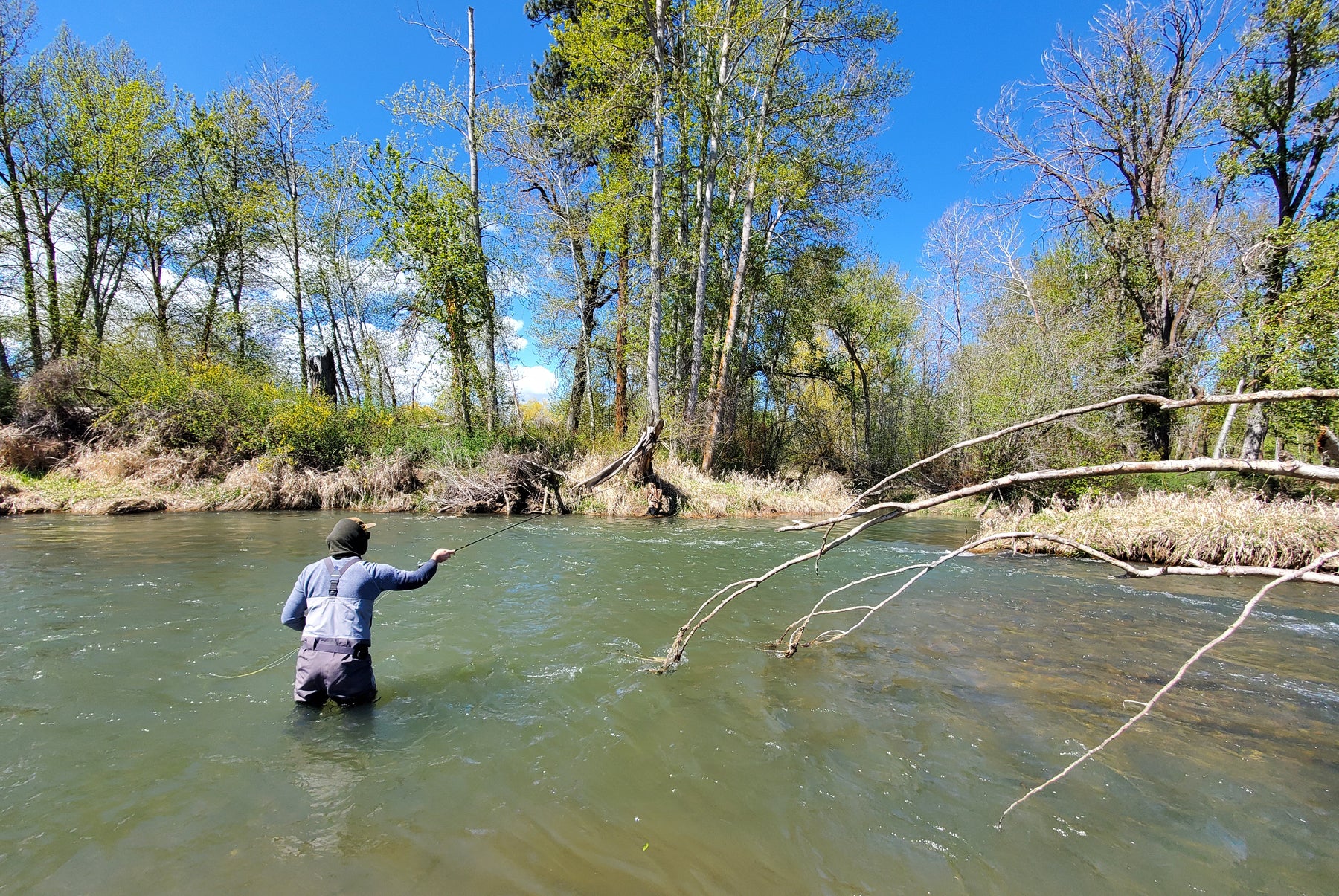CALL NOW (509) 933-2300
CALL NOW (509) 933-2300

Over the years I have had a few fly fishing epiphanies where the light bulb simply "comes on". Everything gets easier when you understand. Less flailing, flogging, and failing. More success, more confidence, less effort. I remember when I learned to Double Haul... by watching, not casting. I can remember when I learned to cross & uncross my hands 3 times during a spey cast. Life changing. I can remember when I learned to deliver a "Drop Mend" while indicator fishing. The latter is perhaps the most significant. It's explained in the video below, but I strongly encourage to take a few minutes and read the text. If you "get it", you'll be far more successful.
If you can execute this mend properly, you'll essentially pivot your strike indicator upstream of your fly, into the SAME SEAMLINE. Please read that twice. You'll also put your nymph(s) down under your strike indicator almost instantly, then you'll be able to gently back mend and hold the indicator at a rate of speed slightly slower than the surface currents and more akin to the speed of the nymphs. Getting your flies to "hang" or "suspend" rather than being tugged along by the indicator.
You'll typically use this mend on longer or water that is pushing pretty hard on the surface. You'll hear this in the video, but the surface currents are WAY faster than the water your nymph should be hanging in. The advantage is that if you pivot the indicator back, it will allow the fly to drop instantly as if there is no line attached. Indicator floats over it, the nymph hangs under.
Inside corners or locations that you are casting upstream across slower water, into faster water. If your nymph is landing in current faster than the indicator, that is perfect! We call this a "neutral" drift and it hardly requires a mend at all. This will allow your fly to start dropping with slack line as it catches up with the indicator (which is in slightly slower water). The goal here is to hardly mend at all. If you are in the correct spot, casting at the correct angle, the drift is easy. Things are often tricky so you won't always have this luxury! You'll need this mend.
